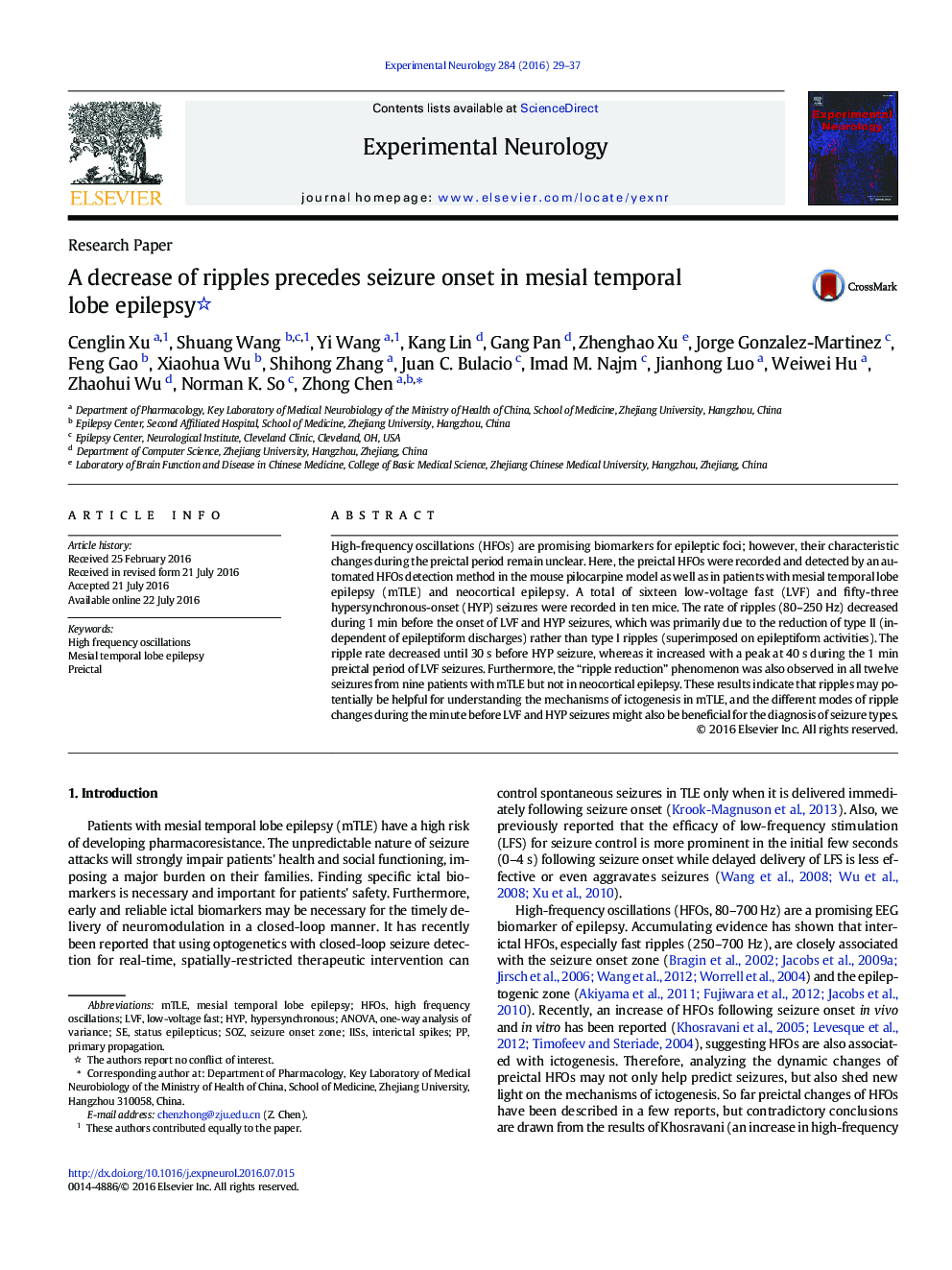| Article ID | Journal | Published Year | Pages | File Type |
|---|---|---|---|---|
| 3055323 | Experimental Neurology | 2016 | 9 Pages |
•HFOs can be divided into type I ripple, type II ripple and fast ripple.•The rate of ripples decreased during 1 min precede seizure onset in pilocarpine mice.•Type II ripple decreased more prominently than type I in this process.•This phenomenon was further verified in TLE but not neocortical epilepsy patient.
High-frequency oscillations (HFOs) are promising biomarkers for epileptic foci; however, their characteristic changes during the preictal period remain unclear. Here, the preictal HFOs were recorded and detected by an automated HFOs detection method in the mouse pilocarpine model as well as in patients with mesial temporal lobe epilepsy (mTLE) and neocortical epilepsy. A total of sixteen low-voltage fast (LVF) and fifty-three hypersynchronous-onset (HYP) seizures were recorded in ten mice. The rate of ripples (80–250 Hz) decreased during 1 min before the onset of LVF and HYP seizures, which was primarily due to the reduction of type II (independent of epileptiform discharges) rather than type I ripples (superimposed on epileptiform activities). The ripple rate decreased until 30 s before HYP seizure, whereas it increased with a peak at 40 s during the 1 min preictal period of LVF seizures. Furthermore, the “ripple reduction” phenomenon was also observed in all twelve seizures from nine patients with mTLE but not in neocortical epilepsy. These results indicate that ripples may potentially be helpful for understanding the mechanisms of ictogenesis in mTLE, and the different modes of ripple changes during the minute before LVF and HYP seizures might also be beneficial for the diagnosis of seizure types.
